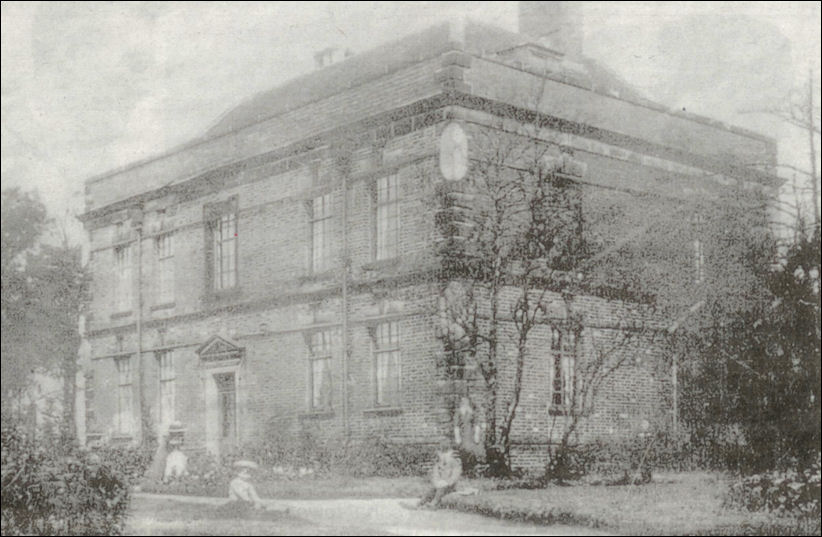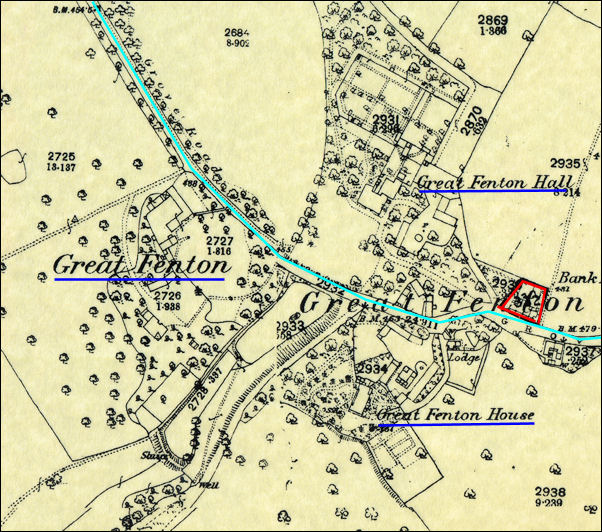![]()
|
|
|
|
|
Stoke-on-Trent - photo of the week |
Advert of the Week
Potworks of the Week
Great Fenton House, Heron Cross, Fenton
|
|

Great Fenton House, Heron Cross, Fenton
photo: Mick Faulkner
| Known as
Great Fenton House, it stood on high ground of Grove Road, near the
entrance to the Stafford and Kemball collieries, and was built in the
early 18th century.
Little is known of its early history. A Thomas Allen lived there and an Edward Challinor. In 1913, the estate was sold to Stafford Coal And Iron Company. For some time the furnace manager and later the company secretary lived there. My late uncle Roland Hill, while employed at the colliery, helped to lay electricity on to the house. By the outbreak of the Second World War it was uninhabited and was used by the Home Guard. As a child I remember seeing them on the roof with rifles. After the war, in 1948, it was demolished. For the local children, the area was an exciting but dangerous playground, with two nice pools and rope swings on the large trees. I remember playing in the walled garden. It must have been a very peaceful area until 1873 and the 3rd Duke of Sutherland started the coal and iron mines, where the Britannia Stadium is now. By 1920, the five shafts with iron and steel works and brickworks employed 3,800 men with an output of 730,000 tons of coal per annum, the five shafts being named after the directors of the company: Pender, Bourne, Homer, Sutherland and Kemball. In 1924, the 4th Duke of Sutherland cut the first sod for the new Hem Heath Colliery at Trentham. On the other side of the two pools in Grove Road stood another 17th century house called Great Fenton Hall. DAVE WALKLETT, Caverswall
|

1878 OS map of the 3
large houses on Grove Road
|
to the north Great Fenton Hall and, marked in red, a group of 1720's workers cottages which both preceded and succeeded all three large houses to the south is Great Fenton House and another large hose just marked 'Great Fenton' - between these two properties are the remnants of two fish ponds (plots marked 2933 and 2728) from an earlier moated farm |

The
approximate location of the three large houses - some features on the
ground can still seen today.
The area marked in red are the 1720 cottages shown on the 1878 map
above.
|
The house was probably built in the mid-17th century by Thomas Allen, where his son, Reverend Dr Thomas Allen, former Rector of Stoke from 1697, was born. The house replaced an earlier ancient property which was once surrounded by a huge ditch, probably created for defensive purposes. It had extensive views to Trentham Hall. In 1841 it was occupied by his grandson Thomas Allen, then aged 65, and his house servant Jane Adams, aged 35. Allen was then considered a wealthy land owner.
In 1855 the trustees of the late Thomas Allen leased the house to Edward Challinor for 10 years. The house and land was then leased out to the Duke of Sutherland for mining purposes until 1913, when it was sold to the Stafford Coal and Iron Company. In 1891, the house was occupied by Samuel Alexander, aged 57, a blast furnace manager, his wife Isabella, and their two unmarried daughters, Jane and Mary.
Richard
Talbot, Penkhull
|
|
related pages Fenton - the centre of the universe? also see.. Advert of the Week |